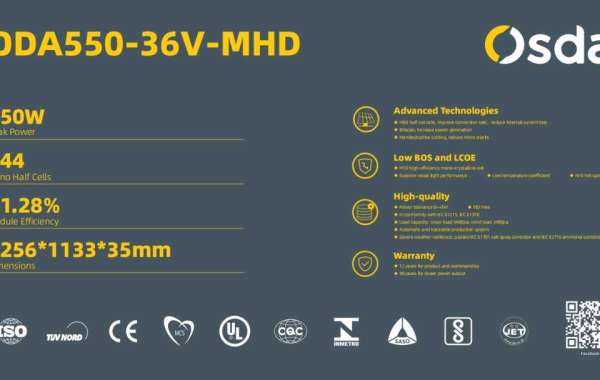In the future, in order to improve the competitiveness of the new energy industry and fully realize market-oriented development with no subsidies or even low prices, it is still necessary to strengthen innovation drive, further improve power generation efficiency, greatly increase photovoltaic installed capacity, and reduce power generation costs.
The pursuit of a lower cost of electricity (LCOE) is an eternal theme in the development of the photovoltaic industry, and owners of photovoltaic power plants have increasingly stringent requirements for the cost of electricity. At present, the mass production efficiency of p-type PERC has almost reached the limit. In order to further promote the industry's efficiency improvement and cost reduction, osda puts more energy into the transformation and upgrading of high-efficiency n-type products.
Among many n-type technologies, passivation contact (TOPCon) technology is the most likely technology route to achieve large-scale industrialization first. Because it has good compatibility with PERC battery production line equipment and process, it is easy to upgrade. At the same time, TOPCon technology has the advantages of low attenuation, low temperature coefficient of power, high bifaciality, and high low-light response ability. The n-type TOPCon module can effectively improve the photovoltaic investment income and reduce the cost of electricity.
The cost of photovoltaic electricity is closely related to initial investment, operation and maintenance costs, hours of power generation, and power generation. Both project investment cost and power generation efficiency are important factors affecting the cost of electricity. In order to further reduce the cost of photovoltaic power generation, it is necessary to reduce the equipment cost of components and at the same time improve the conversion efficiency of battery components. The two cannot be neglected. The improvement of module efficiency and power can effectively reduce BOS cost and land lease fee. Since the n-type module has the advantages of high bifaciality, low attenuation and temperature coefficient, it is conservatively estimated based on a 2% increase in power generation hours, and the power generation per mu of the n-type module will be significantly improved. Static power generation without considering energy storage Investment has also been reduced to varying degrees. Under the same conditions, the more efficient n-type TOPCon modules have achieved varying degrees of savings in photovoltaic support, foundation, cables, land and installation costs.
What is more noteworthy is that n-type TOPCon modules, with their ultra-high power and efficiency, also have advantages in annual power generation, and can achieve higher power output in the entire life cycle. With the further expansion of production capacity, further improvement of product efficiency, and further decline of module prices, n-type TOPCon technology, which can effectively increase investment income and reduce the cost of electricity, will inevitably play a vital role in the future photovoltaic market.
Entering 2023, the rush for installation in the photovoltaic industry has quietly begun, and modules with reliable quality and stable supply are even more difficult to find. As a brand in the photovoltaic industry, osda has actively deployed N-type production capacity since its inception. In the face of a broad market prospect, osda will seize the opportunity to accelerate the construction of major power generation projects with leading delivery speed and reliable photovoltaic products, helping the world to accelerate the transformation and upgrading of energy structure.








